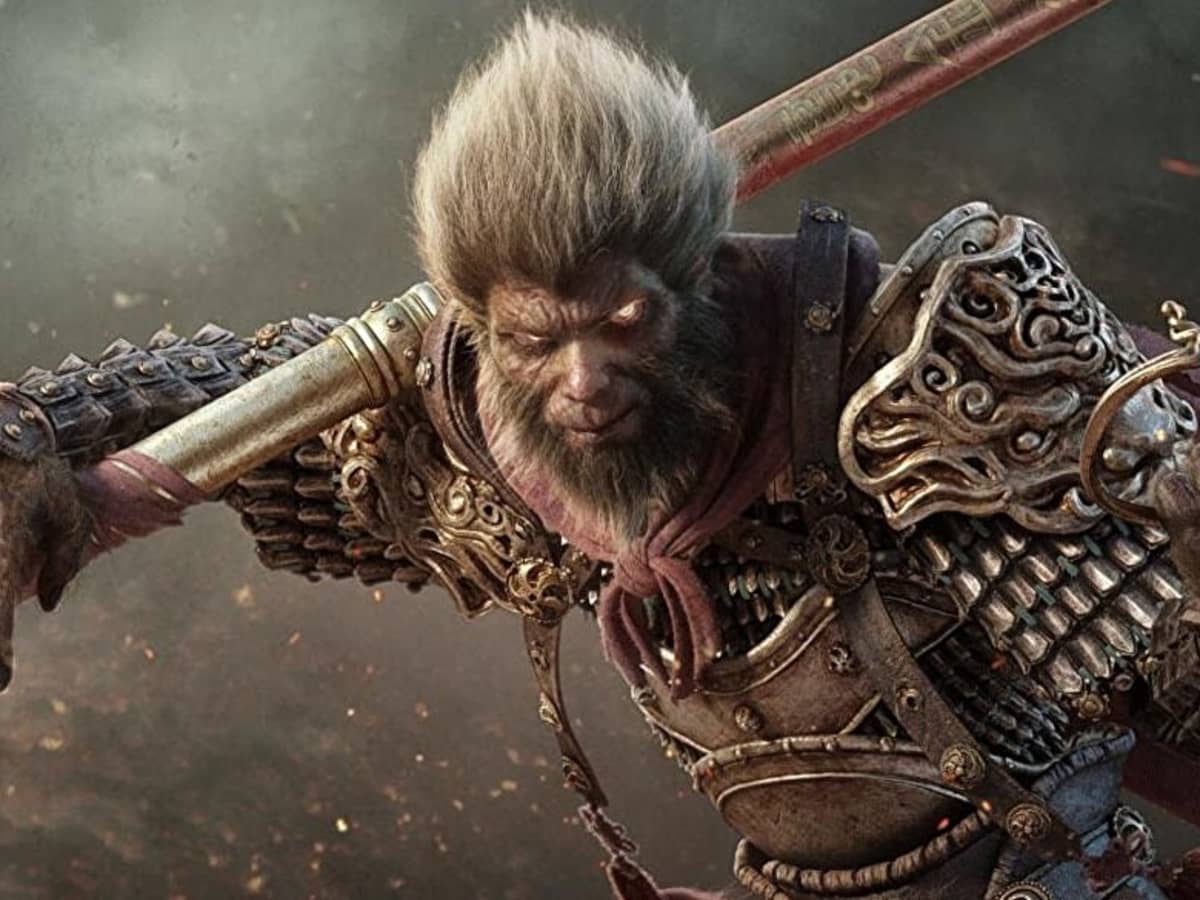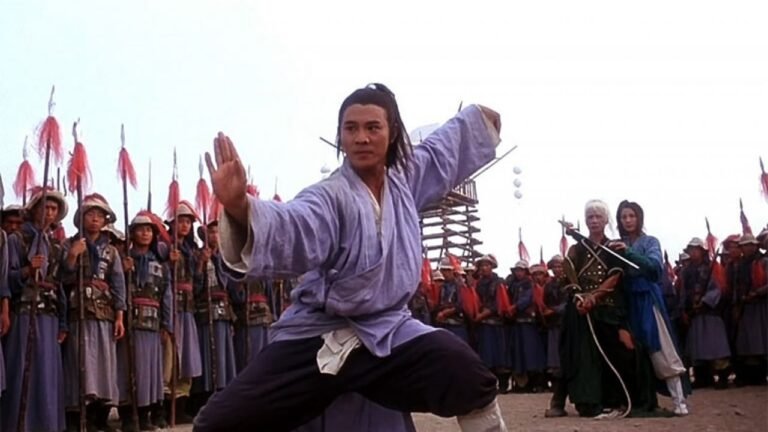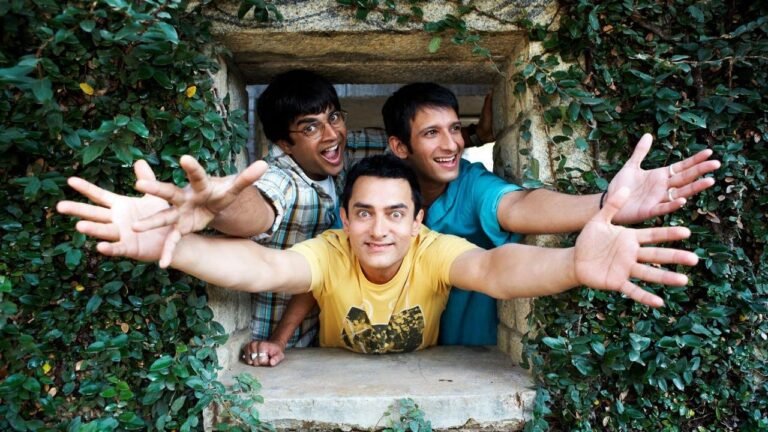
Sun Wukong, also known as the Monkey King, is one of the most beloved characters in Chinese mythology and literature. Originating from the 16th-century novel “Journey to the West”, attributed to Wu Cheng’en, Sun Wukong has captivated audiences with his extraordinary abilities, rebellious spirit, and interesting character arc. Over the years, various cinematic adaptations have sought to bring this legendary figure to life. This article examines the historical myths surrounding Sun Wukong and evaluates whether cinematic adaptations have done justice to his rich legacy.
Sun Wukong’s origins in “Journey to the West” are both fantastical and deeply rooted in Chinese cultural and religious traditions. According to the narrative, he is born from a stone that has absorbed the primordial forces of Heaven and Earth. This unique birth grants him supernatural abilities, including immense strength, the power to transform into 72 different creatures, and the ability to traverse vast distances with a single somersault.
Sun Wukong’s early life is marked by rebellion and a quest for power. He trains under the Taoist immortal Patriarch Subodhi, learning valuable skills and eventually acquiring the title “Great Sage, Equal to Heaven”. His defiance against the Jade Emperor leads to his imprisonment under a mountain by the Buddha, where he remains for 500 years.

The crux of Sun Wukong’s story unfolds during his journey with the monk Xuanzang to obtain sacred Buddhist scriptures from India. Sun Wukong is released from his imprisonment to serve as one of Xuanzang’s disciples. Throughout the journey, he protects Xuanzang and his companions from various demons and evildoers, while also undergoing significant personal growth and redemption.
“Journey to the West” is not merely a tale of adventure; it explores themes of spirituality, redemption, camaraderie, and the struggle between good and evil. Sun Wukong’s character arc is particularly compelling as it transitions from arrogance and rebellion to humility and enlightenment.
Cinematic Adaptations: A Historical Overview
Sun Wukong’s adventures have been adapted into numerous films and television series, each offering a unique interpretation of his character and story. Some of the most notable adaptations include:
“Havoc in Heaven” (1961, 1964): This animated film, produced by the Shanghai Animation Film Studio, focuses on Sun Wukong’s rebellion against the Jade Emperor. The film’s stunning artwork and faithful adaptation of the source material were instrumental in popularizing Sun Wukong in the 20th century.
“A Chinese Odyssey” (1995): Directed by Jeffrey Lau and starring Stephen Chow, this two-part film series offers a comedic and romantic take on the “Journey to the West” saga. While it deviates significantly from the source material, it captures the essence of Sun Wukong’s complex personality and his journey towards self-discovery.
“The Monkey King” Film Series (2014, 2016, 2018): These films, starring Donnie Yen and Aaron Kwok as Sun Wukong, aim to provide a visually spectacular retelling of his story. The trilogy is notable for its high production values and special effects, though it has received mixed reviews for its narrative execution and character development.
“Journey to the West: Conquering the Demons” (2013) and “Journey to the West: The Demons Strike Back” (2017): Directed by Stephen Chow and Tsui Hark, respectively, these films offer a modernized and highly stylized interpretation of Sun Wukong’s adventures. They blend action, comedy, and drama while exploring the deeper themes of the original narrative.

In assessing whether cinematic adaptations have done justice to the myths of Sun Wukong, several factors must be considered, including narrative fidelity, character portrayal, thematic exploration, and cultural authenticity.
Narrative Fidelity
While some adaptations, such as “Havoc in Heaven,” strive for narrative fidelity, others take significant creative liberties. For example, “A Chinese Odyssey” and the Stephen Chow-directed films introduce substantial deviations from the source material, including new characters, romantic subplots, and comedic elements. These changes can sometimes distance viewers from the original myth while offering fresh perspectives on the story.
Character Portrayal
The portrayal of Sun Wukong varies across adaptations. In traditional retellings, such as the Shanghai Animation Film Studio’s works, he is depicted as a mischievous yet noble character, true to his literary counterpart. In contrast, Stephen Chow’s Sun Wukong in “A Chinese Odyssey” is more comedic and romantic, providing a different but still engaging interpretation.
“The Monkey King” film series, with its emphasis on high-octane action and special effects, often portrays Sun Wukong as a larger-than-life figure. While visually impressive, this portrayal can sometimes overshadow the character’s deeper dimensions, such as his journey towards enlightenment and redemption.
Thematic Exploration
The deeper themes of “Journey to the West,” including spiritual growth, redemption, and the battle between good and evil, are crucial to Sun Wukong’s story. “Havoc in Heaven” and the Stephen Chow-directed films successfully explore these themes, albeit through different lenses. The former emphasizes Sun Wukong’s rebellious nature and eventual submission to higher powers, while the latter blends humor and pathos to depict his spiritual journey.
Cultural Authenticity
Cultural authenticity is a critical aspect of adapting a beloved Chinese myth. Traditional adaptations often maintain a high degree of cultural fidelity, incorporating elements of Taoist and Buddhist philosophy, Chinese folklore, and historical context. Modern adaptations, while sometimes deviating from cultural accuracy, aim to make the story accessible and appealing to contemporary audiences.
Stephen Chow’s films, for example, infuse modern sensibilities and humor while retaining the essence of Chinese cultural themes. “The Monkey King” film series, with its impressive visual effects, introduces a more globalized aesthetic but sometimes at the cost of diluting specific cultural elements.
The historical myths surrounding Sun Wukong, the Monkey King, offer a rich tapestry of adventure, spiritual growth, and complex characterization. Cinematic adaptations have attempted to capture this essence to varying degrees of success.
While traditional adaptations like “Havoc in Heaven” strive for narrative fidelity and cultural authenticity, modern retellings such as “A Chinese Odyssey” and “Journey to the West: Conquering the Demons” introduce new elements that appeal to contemporary audiences. “The Monkey King” film series, with its spectacular visuals and action-packed scenes, presents a more grandiose but sometimes superficial portrayal of Sun Wukong.
Ultimately, each adaptation brings its unique flavor and interpretation to the enduring myth of Sun Wukong. Whether through faithful retellings or creative reimaginings, the cinematic versions continue to keep the legacy of the Monkey King alive, introducing him to new generations and ensuring that his adventures remain a beloved part of global culture.





He’s one of the people who can defeat God of war. I think so